- Home
- Paula Byrne
The Adventures of Miss Barbara Pym
The Adventures of Miss Barbara Pym Read online
THE ADVENTURES OF MISS BARBARA PYM
A Biography
Paula Byrne
Copyright
William Collins
An imprint of HarperCollinsPublishers
1 London Bridge Street
London SE1 9GF
WilliamCollinsBooks.com
HarperCollinsPublishers
1st Floor, Watermarque Building, Ringsend Road
Dublin 4, Ireland
This eBook first published in Great Britain by William Collins in 2021
Copyright © Paula Byrne 2021
Paula Byrne asserts the moral right to be identified as the author of this work
Cover design by Anna Morrison
Cover photograph © the Barbara Pym Society
A catalogue record for this book is available from the British Library
All rights reserved under International and Pan-American Copyright Conventions. By payment of the required fees, you have been granted the non-exclusive, non-transferable right to access and read the text of this e-book on-screen. No part of this text may be reproduced, transmitted, down-loaded, decompiled, reverse engineered, or stored in or introduced into any information storage and retrieval system, in any form or by any means, whether electronic or mechanical, now known or hereinafter invented, without the express written permission of HarperCollins
Source ISBN: 9780008322205
Ebook Edition © 2021 ISBN: 9780008322229
Version: 2021-02-23
Dedication
for Stephen Pickles
Epigraph
‘No Need for Modesty in a Diary’
Barbara Pym, 9 September 1933
Contents
Cover
Title Page
Copyright
Dedication
Epigraph
Prologue: In which Miss Barbara Pym pays a Visit to Jane Austen’s Cottage
BOOK THE FIRST: A SHROPSHIRE LASS
I. In which our Heroine is born in Oswestry
II. In which we learn how a Servant Girl, Phoebe Pym, is seduced by a Gentleman and gives birth to a Baby Boy
III. In which Miss Pym is sent away to Boarding School
IV. Miss Pym attempts her First Novel: ‘Young Men in Fancy Dress’
V. In which Miss Barbara Pym goes up to St Hilda’s College, Oxford
VI. In which our Heroine might have said Et in Arcadia ego
VII. In which Miss Pym returns North
VIII. In which Miss Pym returns to Oxford
IX. In which our Heroine meets a Handsome Young Man called Rupert Gleadow
X. Miss Pym’s Summer of Love
XI. Our Heroine returns to Shropshire for the Long Vacation and invites Rupert to stay
XII. In which Things begin to become a little complicated with Rupert
XIII. The End of the Affair
XIV. In which we are introduced to ‘the Saga of Lorenzo’
XV. In which Sandra makes her Appearance
XVI. In which Sandra has her First Date with Lorenzo and bites him on the Cheek
XVII. We’re having a Heatwave – a Tropical Heatwave
XVIII. Miss Pym reflects upon Stormy Weather
XIX. In which Sandra returns
XX. We are given a Glimpse of Sandra’s Diary
XXI. In which Sandra tries to renounce Lorenzo
XXII. A Pet Kangaroo
XXIII. Sandra returns to Oxford and resumes her Affair with Lorenzo
XXIV. The Saga of Sandra and Lorenzo, continued …
XXV. In which a Very Important Correspondence begins
BOOK THE SECOND: GERMANY
I. Miss Pym tours Germany
II. In which Fräulein Pym falls for a Handsome Nazi
III. In which Sandra returns to Oxford and loses her Swastika Badge somewhere on the Banbury Road
IV. Miss Pym’s Final Term
V. Night of the Long Knives
VI. Miss Pym returns to Nazi Germany and attends a Hitler Rally
VII. In which Miss Pym returns to England and begins writing a Novel
VIII. Miss Pym continues her Novel of ‘Real People’
IX. In which Miss Pym returns to Oxford to take her BA Degree
X. In which our Heroine goes to Germany for the third time and sleeps with her Nazi
XI. An Untoward Incident on the River
XII. ‘An English Gentlewoman can never come to any Harm’
XIII. Omit the Nazis
XIV. Pymska
XV. In which Pymska is involved in a Tragic Accident
XVI. In which Jock and Pymska draw closer together …
XVII. The Inquest
XVIII. Miss Pym begins her Second Novel in the Summer of 1936 and returns to Oxford to be Henry’s Amanuensis
XIX. The Story of Adam and Cassandra
XX. Jilted
XXI. An Introduction to Miss Ivy Compton-Burnett
XXII. Pymska writes a Finnish Novel
XXIII. Paavikki Olafsson and Jay
XXIV. Liebe Vikki
XXV. A Trip to the Botanical Gardens
XXVI. An Old Brown Horse
XXVII. In which our Heroine sees Friedbert for the Last Time
XXVIII. In which Pymska returns briefly Home to England and Vikki Olafsson goes to Poland
XXIX. Miss Pym leaves Poland in a Hurry, whilst there is still Time
XXX. We rummage in the Lumber Room
XXXI. We go to Crampton Hodnet
XXXII. Introducing Mr Simon Beddoes
XXXIII. A Peek into 112 Eaton Square
BOOK THE THIRD: WAR
I. Operation Pied Piper
II. In which we meet Mrs Dobbs of Birkenhead and Lady Wraye of Belgravia
III. Miss Pym reads a Government White Paper about Nazi Atrocities
IV. Our Heroine is rejected Again
V. Miss Pym begins a Novel in Real Time
VI. The Shadow of the Swastika
VII. Food Glorious Food
VIII. Oxford Revisited
IX. Miss Pym joins the ARP
X. In which our Heroine works for the YMCA in an Army Tented Camp
XI. A Sketch of Miss Ivy Compton-Burnett
XII. I Married a Nazi
XIII. Miss Pym returns to her ‘Sentimental Journal’
XIV. So Very Secret
XV. Operation Bullseye
XVI. Miss Pym is offered a Job in the Censorship Department (German) and hears News of Friedbert
BOOK THE FOURTH: FROM THE COPPICE TO NAPLES
I. Miss Pym moves to a ‘Select Residential District’ of Bristol
II. In which we meet a Philandering Gentleman called Gordon Glover
III. The Marriage of Miss Hilary Pym and the Birth of a Baby
IV. Mr Gordon Glover makes a Bold Declaration to Miss Pym
V. It’s That Man Again
VI. Miss Pym has a Medical Examination
VII. In which Miss Pym pays a visit to her Old Love, Rupert Gleadow
VIII. Miss Pym passes her Interview
IX. Miss Pym experiences Life in Uniform
X. Introducing ‘Wren Pym’
XI. Third Officer Pym is posted to Naples, where she meets ‘Pay-Bob’ Starky
XII. The End of the War
BOOK THE FIFTH: MISS PYM IN PIMLICO
I. In which our Heroine and her Sister take up Residence in London
II. Miss Pym the Anthropologist
III. In which Mr Jock Liddell persists and persuades Miss Pym to revise her Novel
IV. Miss Pym finally tames her Gazelle and it is released to the World
V. In which Miss Pym enters the Age of Dior and the Beveridge Report
VI. In which we read of
an Excellent Woman
VII. In which Miss Pym leaves Pimlico for Barnes
VIII. In which Jock and Henry return (briefly) to the Story
IX. Miss Pym the Novelist takes Tea with the Distinguished Author Elizabeth Bowen in the Company of Several Homosexuals
X. The Celebrated Miss Barbara Pym
XI. The Tale of Jane and Prudence
XII. In which Miss Pym meets Robert Smith, is promoted to Assistant Editor of Africa, and Marks & Spencer takes Umbrage
XIII. Miss Pym enters the New Elizabethan Age
XIV. Miss Pym goes to Portugal
XV. Bill
XVI. What a Saga!
XVII. Darling Denton and Orvil Pym
XVIII. Tracking down Orvil Pym
XIX. We drink a Glass of Blessings
XX. In which Miss Pym goes to Swanwick
XXI. In which Miss Pym goes over to Rome
XXII. A Sketch of Philip Larkin
XXIII. No fond Return to Print
BOOK THE SIXTH: THE WILDERNESS YEARS
I. Miss Pym’s Annus Horribilis
II. Miss Pym takes Umbrage
III. Hullo Skipper
IV. Miss Pym visits Keats’s House in Hampstead
V. Of Wistfulness and Whitsun Weddings
VI. Darling Richard
VII. The Tale of the Sweet Bahamian and the Goddess of Brooksville
VIII. In which Mr Philip Larkin is disgruntled (when was he not?)
IX. In which Miss Pym takes Skipper as her Guest to the FANY Club Lunch and he receives a Love Token from Another Man, in the form of a Drying-up Cloth patterned with Dachshunds
X. Miss Pym is Off-loaded, again
XI. Mr Larkin to the Rescue
XII. In which we read Miss Pym’s plangent Masterpiece, The Sweet Dove Died
XIII. Miss Pym feels her Age
XIV. In trying Circumstances, Miss Pym compares herself to an Amazon
XV. In which Holborn’s Renowned Department Store, Gamages, is demolished
XVI. Miss Pym moves to Finstock
XVII. A Luncheon at the Randolph
XVIII. The Kissinger Syndrome and the Return of Henry Harvey
BOOK THE SEVENTH: IN WHICH THE FORTUNES OF MISS PYM ARE REVERSED
I. A Real Pym Year
II. Tea with Miss Pym
III. Miss Pym plays a Quartet in Autumn
IV. Miss Pym attends the Booker Prize
V. In which Miss Pym is invited as a Castaway on a famous Desert Island
VI. In which Miss Pym works on her Last Novel
VII. In which Miss Pym makes her Final Journey
Epilogue: In which Mr Larkin attends the Funeral of his Much-Loved Correspondent Miss Barbara Pym
Afterword
Picture Section
Notes
Suggestions for Further Reading
Index
Acknowledgements
About the Author
By the Same Author
About the Publisher
PROLOGUE
In which Miss Barbara Pym pays a Visit to Jane Austen’s Cottage
It was August 1969, a few weeks after man landed on the moon and a couple of days before the assembled rock stars of the world played the Woodstock festival. The first episode of Monty Python’s Flying Circus would soon be broadcast on the BBC. An unmarried female novelist, now fifty-six years old, was feeling adrift in this brave new world, so she made a pilgrimage to the cottage in the Hampshire village of Chawton that had been the home of another unmarried female novelist.
That night, Barbara Pym wrote in her diary: ‘I put my hand down on Jane’s desk and bring it up covered in dust. Oh that some of her genius might rub off on me.’[1]
Like Jane Austen, our novelist had published six well-received novels. She had built a following of devoted fans, including such luminaries as the poet Philip Larkin and the Oxford professor Lord David Cecil. She also had a legion of ardent ‘excellent women’ who devoured her novels, borrowed them from the circulating libraries and waited expectantly for the next ‘Barbara Pym’. She had been hailed as the new Jane Austen.
But six years before her visit to Chawton, Pym’s publisher, Jonathan Cape, had rejected Pym’s seventh novel. It was 1963 and London was swinging. The decade had begun with the Lady Chatterley trial and now the Beatles had just released their first LP, Please Please Me. The editors at Cape felt that Barbara Pym’s ‘cosy’ domestic comedies were out of touch, outmoded.
Pym was shocked. She had just completed a draft of what would be her masterpiece. Like the novel she had submitted, it would be considered unpublishable. It was left to languish with her other manuscript novels in a linen cupboard in her shared house in London.
There have been times when even Jane Austen’s novels have fallen out of favour. Tastes and fashions change with each decade, each era. But a truly great body of work will sooner or later bounce back: Austen’s ‘courtship’ novels, for instance – which centred on village life, avoiding overt politics and the wider world – are, for all their limited scope, now acclaimed as forerunners of the women’s movement because they prioritised female experience in a world run by and for men.
Life had left Miss Barbara Pym emotionally bruised, though few would have known this by her outward appearance and demeanour. To look at her she seemed the epitome of middle-class respectability: perfectly coiffed hair; immaculately dressed; good shoes and handbag. To some, she might seem rather intimidating, redoubtable, even; though there was often a twinkle of good humour in those intelligent eyes. The young women in mini-skirts with beehive hairdos seemed to live on a different planet from Miss Barbara Pym, assistant editor of Africa magazine.
‘If only someone would have the courage to be unfashionable,’ Pym had remarked sadly to her friend Philip Larkin.[2] She feared that her novels would go out of print and she would never find another publisher. Her sense of identity had been founded on her literary status, so Cape’s rejection was a bitter blow.
Barbara Pym was a lover not only of Jane Austen, but also of Austen’s eighteenth-century predecessors. At St Hilda’s College, Oxford, where she studied from 1931, female undergraduates were called by their surnames; Barbara was always ‘Pym’ to her friends. But she also liked the appellation ‘Miss Pym’: she frequently referred to herself in this way in her letters, notebooks and journals. In an early (unfinished) novel, she describes the heroine, who is partly based on herself, as a ‘perfect eighteenth-century lady’. She loved Samuel Richardson’s Pamela, but lost interest when Mr B’s intentions towards his beautiful maidservant became honourable.[3] (It is a good point: Mr B is a wonderful villain but loses all credibility when he reforms.) It was the racier aspects of the novel that attracted Barbara Pym.
Pym’s own diaries are prefaced ‘The Adventures of Miss Pym’, and later of ‘Sandra’ and of ‘Pymska’, in the manner of Henry Fielding’s masterpiece Tom Jones. Like Fielding’s naive hero, Miss Pym spent much of her youth falling in love and – surprisingly in the light of her reputation for provinciality – a considerable amount of it on the road. So it is fitting to imagine her life as a picaresque adventure, with a Fieldingesque narrative: ‘In which our heroine …’
BOOK THE FIRST
A Shropshire lass
CHAPTER I
In which our Heroine is born in Oswestry
Shropshire is a rural county in the north-west of England, nestling on the Welsh border. It is a green and pleasant land, but not far from the city of Liverpool and the industrial shipbuilding town of Birkenhead; it is quiet, slow, rainy and green. The poet A. E. Housman immortalised its ‘blue remembered hills’ in A Shropshire Lad, even though he hardly spent any time there. Oswestry, in the north of the county and close to the border, was the birthplace of another poet, Wilfred Owen. It is an ancient market town dating back to 1190. Its narrow streets conjure up images of its medieval past: ‘The Horsemarket’, ‘English Walls’, ‘Welsh Walls’, ‘The Bailey’.
Barbara Pym was bo
rn in the family home, 72 Willow Street, near the centre of Oswestry. Across the road was the office where her father, Frederic Crampton Pym, practised as a solicitor; his brass plate ‘Crampton Pym and Lewis’ is still in place beside the doorway. Barbara was born on 2 June 1913; her only sibling, Hilary, was born in 1916. By then, the family had moved to a detached Edwardian house called Morda Lodge. Set back from the road, it boasted a paddock, a coach house and a spacious garden of three acres. The attic room of the converted coach house was a playroom for the little girls.
During the summer months the garden at Morda Lodge was a riot of colour and fragrance. In a letter written to her Oxford friends, Pym describes the array of spring flowers there: ‘primroses, violets, daffodils, scyllas, grape hyacinths, anemones’.[1] In one of her short stories, a heroine, modelled on herself, loves flowers with such passionate intensity that she believes that they have feelings and emotions and worries that they cry when they are cut down. Her diaries too are a record of her passion for flowers, which lasted for all of her life. Many of her happiest moments were punctuated by the gift of flowers, especially when they were brought by lovers – as when one lover once left a farewell note alongside two dozen ‘of the loveliest daffodils’.[2]
Pym described her father Frederic as ‘extremely good-tempered, undemanding and appreciative’.[3] Every day he would set off on foot for his office in the middle of town and return home for lunch. Sometimes, as young girls, Barbara and Hilary would visit him in his book-lined office, which he shared with his clerk and typist. Fred was a good singer, singing bass in the church choir. He was also athletic and a keen runner. A knee injury kept him out of the First World War, and he took up golf. He enjoyed reading: Rudyard Kipling and the thriller writer Edgar Wallace were among his favourite authors.
A more charismatic and somewhat eccentric figure was Pym’s mother, Irena. The daughter of a successful businessman, Irena was from a large, close family. Two of her unmarried sisters, May and Janice, lived next door to Morda Lodge with their mother in a house called Scottswood. The girls would climb over the garden wall to pay regular visits to their aunts and grandmother. Fun and energetic, Irena bought a motorbike to get around during the war, wearing leather gloves and a long leather motoring coat. The Pyms kept ponies and chickens. The girls had little interest in the ponies, though Irena drove one of them, Mogus, around in a trap. Irena would feed the chickens, Barbara remembered, wearing an old tweed coat – a detail that she stored up and used for a portrait of her mother in the novel, Jane and Prudence.

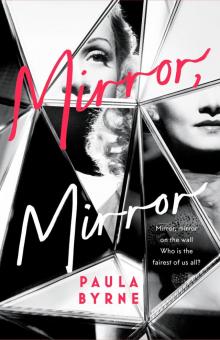 Mirror, Mirror
Mirror, Mirror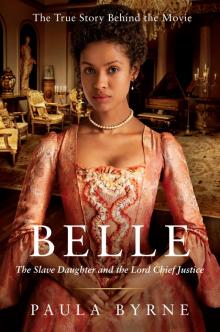 Belle
Belle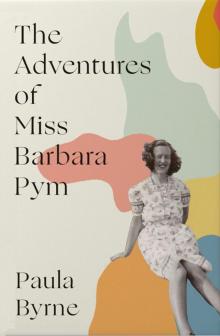 The Adventures of Miss Barbara Pym
The Adventures of Miss Barbara Pym The Real Jane Austen
The Real Jane Austen Look to Your Wife
Look to Your Wife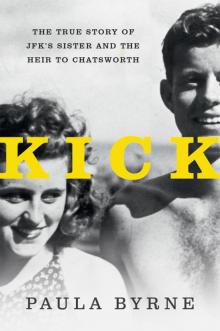 Kick
Kick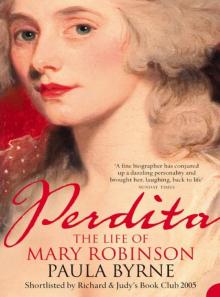 Perdita
Perdita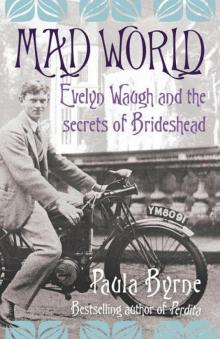 Mad World: Evelyn Waugh and the Secrets of Brideshead (TEXT ONLY)
Mad World: Evelyn Waugh and the Secrets of Brideshead (TEXT ONLY)